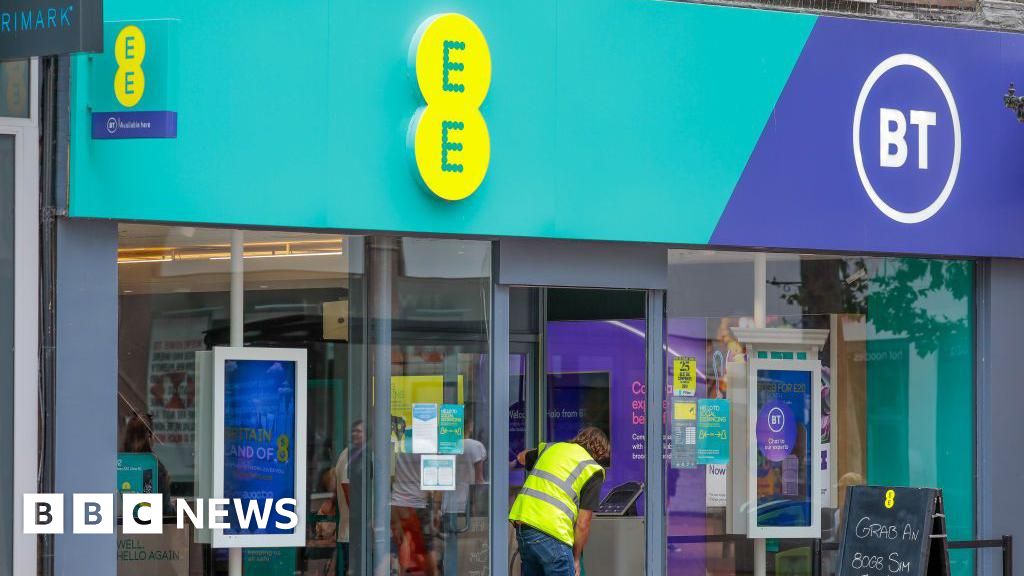What Is an Electronic Point of Sale System?

An Electronic Point of Sale (EPoS) system is a modern solution that replaces traditional cash registers, integrating hardware and software to manage sales and inventory seamlessly. It automates transaction processes, captures real-time sales data, and offers various payment options, including cash, credit cards, and digital wallets. This efficiency not only improves customer experiences but additionally provides businesses with insights for better decision-making. Comprehending its key features and advantages can greatly impact your operations and profitability.
Key Takeaways

- An Electronic Point of Sale (EPoS) system automates transaction processing using integrated hardware and software for sales management.
- EPoS systems replace traditional cash registers, improving efficiency in sales and inventory management.
- Key features include real-time inventory tracking, customer relationship management, and multi-payment options.
- They enhance operational efficiency, reduce errors, and provide detailed sales reports for better decision-making.
- EPoS systems are available in various types, including cloud-based, PC-based, and mobile solutions for different business needs.
Definition of Electronic Point of Sale System

An Electronic Point of Sale (EPoS) system is a modern solution designed to simplify and improve sales transactions in various retail and hospitality settings.
This electronic point of sale system replaces traditional cash registers with a computerized setup that automates sales and inventory management. EPoS systems for retail utilize hardware like barcode scanners, cash drawers, and receipt printers, paired with software that tracks sales data and customer information.
They enable real-time inventory tracking, helping you maintain accurate stock levels and streamline supply chain management. Furthermore, these systems support multiple payment methods, including cash, credit/debit cards, and mobile payments, enhancing the payment experience.
EPoS cash registers for small business owners provide detailed sales reports, aiding in informed decision-making.
Key Features of EPoS Systems

Key features of EPoS systems greatly improve the efficiency and effectiveness of sales operations in retail and hospitality environments.
These electronic point of sale solutions support real-time inventory management, enabling you to track stock levels and automate reordering processes seamlessly. They generate detailed sales reports that offer insights into product performance, guiding your inventory and marketing strategies.
With various payment options like credit/debit cards and mobile payments, EPoS systems streamline the checkout process for customers.
Moreover, customer management features let you store customer information, track purchase history, and implement loyalty programs, enhancing engagement.
Integration capabilities with other software, such as accounting systems, guarantee smooth data sharing, improving overall operational efficiency.
Explore epos systems for sale to find the right fit for your business.
Advantages of Using EPoS for Businesses

Using an EPoS system can considerably improve your operational efficiency by automating tasks like inventory management and sales reporting.
This not just reduces manual errors but likewise saves valuable time for your staff, allowing them to focus on customer service.
Furthermore, with streamlined inventory management, you can maintain ideal stock levels, preventing both stockouts and overstock situations.
Enhanced Operational Efficiency
Implementing an Electronic Point of Sale (EPoS) system can considerably improve your business’s operational efficiency. EPoS devices automate manual tasks, allowing your staff to focus more on customer service rather than administrative duties. Real-time inventory management gives you accurate stock levels, helping you avoid overstocking or stockouts. Furthermore, EPoS systems generate detailed sales reports, enabling you to make informed decisions quickly. Improved payment processing supports multiple methods, including contactless options, which speeds up transactions and boosts customer satisfaction. By minimizing human errors in data entry, EPoS systems guarantee greater accuracy in sales tracking and inventory management.
| Feature | Benefits |
|---|---|
| Automated Tasks | Reduces administrative duties |
| Real-Time Reporting | Informed decision-making |
| Fast Payment Processing | Improved customer satisfaction |
Streamlined Inventory Management
Streamlined inventory management is one of the most significant advantages of adopting an Electronic Point of Sale (EPoS) system in your business.
With real-time inventory tracking, you can continuously monitor stock levels, reducing the risk of overstocking or stockouts. EPoS systems automate inventory management by generating alerts when stock falls below set thresholds, making reordering simple.
This accurate data improves demand forecasting, allowing you to make informed purchasing decisions based on sales trends. By integrating with supply chain management, EPoS systems enhance inventory turnover, minimizing waste and boosting cash flow.
Moreover, analytics provide visibility into inventory performance, helping you identify slow-moving items and optimize your product offerings, eventually increasing your profitability.
Components of an EPoS System

An Electronic Point of Sale (EPoS) system is built on a combination of essential hardware and software components that work together to facilitate efficient transaction processing and inventory management. Key hardware includes cash drawers, barcode scanners, thermal receipt printers, and user-friendly touchscreens or tablets. The software manages sales transactions, tracks inventory, and generates insightful sales reports.
Additionally, a PDQ machine enables secure card payments, including contactless options, whereas customer displays improve the shopping experience by showing transaction details and promotions.
Here’s a quick overview of these components:
| Hardware/Software | Purpose |
|---|---|
| Toshiba Cash Drawer | Secure cash storage |
| Zebra Barcode Scanner | Scanning items for sales |
| Epson Thermal Printer | Printing receipts |
| Touchscreen/Tablet | User interface for transactions |
| PDQ Machine | Processing card payments securely |
How EPoS Systems Work

EPoS systems work by integrating various hardware components, such as barcode scanners, cash drawers, and receipt printers, with sophisticated software to streamline sales transactions.
When a sale occurs, the system processes payments securely through payment networks, using technologies like EMV chips or NFC for contactless payments.
This combination not only updates inventory levels in real-time but additionally captures valuable sales data for analysis, helping you make informed business decisions.
Hardware Components Involved
At the core of every Electronic Point of Sale (EPoS) system are several critical hardware components that work together to facilitate efficient transactions.
You’ll find a cash drawer for secure cash handling, a barcode scanner for quick product identification, and a thermal receipt printer to generate transaction receipts.
Touchscreen monitors or tablets act as user interfaces, allowing staff to process sales as they access inventory and customer data.
PDQ machines enable secure card payments by reading credit and debit cards through swiping or tapping.
Customer displays improve transparency, letting shoppers see transaction details.
In grocery environments, scales provide accurate weight measurements for products sold by weight, seamlessly integrating with inventory management functions.
Transaction Processing Steps
Efficiently processing transactions is vital for any retail operation, and a well-designed Electronic Point of Sale (EPoS) system shines in this area.
First, you scan product barcodes with a barcode scanner, retrieving item information from the database and calculating the total cost in real-time. Once all items are scanned, the system processes payments through various methods like cash, credit/debit cards, or mobile payments, connecting to banking networks for transaction authorization.
After payment confirmation, the EPoS generates a receipt via a thermal printer, providing proof of purchase. Concurrently, it updates inventory levels automatically, ensuring accurate stock counts.
The system likewise captures sales data for reporting, allowing you to track performance, trends, and customer purchasing behavior effectively.
Types of EPoS Systems Available

There are several types of Electronic Point of Sale (EPoS) systems available, each designed to meet different business needs and budgets.
Cloud-based EPoS systems operate on remote servers, offering flexibility and scalability, making them ideal for growing retail businesses.
PC-based EPoS systems use standard desktop hardware with installed software, providing a reliable option for fixed-location businesses.
Mobile EPoS solutions allow staff to process transactions on tablets or smartphones, enhancing customer service and operational efficiency.
Integrated EPoS systems combine specialized retail software with other business applications, facilitating real-time data sharing across platforms.
Each type caters to unique operational requirements, allowing you to choose the best option based on your specific needs and future growth plans.
Comparison Between EPoS and Traditional POS Systems

When comparing Electronic Point of Sale (EPoS) systems to traditional POS systems, it’s clear that the technological advancements in EPoS offer significant advantages for modern businesses.
Here are three key differences:
- Inventory Management: EPoS provides real-time inventory tracking, allowing you to monitor stock levels instantly, whereas traditional systems require manual updates, which can lead to inaccuracies.
- Sales Analytics: Unlike basic cash registers, EPoS generates detailed sales reports and analytics, enhancing your decision-making and product performance insights.
- Payment Options: EPoS supports various payment methods, including contactless payments and mobile wallets, whereas traditional systems often limit transactions to cash and cards.
These features not only streamline operations but additionally improve customer service, making EPoS a more efficient choice for businesses today.
Implementing an EPoS System in Your Business

Implementing an Electronic Point of Sale (EPoS) system in your business can transform how you manage transactions and customer interactions. Start by selecting a system that aligns with your needs, considering features like inventory management and payment processing. Next, set up necessary hardware components, such as cash drawers and barcode scanners.
Then, install and configure the EPoS software, ensuring product databases reflect accurate stock levels. Don’t forget to train your staff on using the system effectively, focusing on key functionalities.
Lastly, regularly review and update your EPoS system to adapt to changing business needs. Below is a table summarizing key steps in the implementation process:
| Step | Description | Importance |
|---|---|---|
| Choose a System | Select based on your business needs | Aligns with operations |
| Set Up Hardware | Install cash drawers and scanners | Seamless transactions |
| Configure Software | Tailor software to your requirements | Accurate stock management |
| Train Staff | Educate employees on system usage | Efficient transactions |
| Regular Updates | Maintain software and hardware | Ideal performance |
Leasing vs. Buying an EPoS System

When deciding between leasing and buying an EPoS system, you need to weigh various factors like cost, flexibility for upgrades, and long-term investment value.
Leasing often requires less upfront cash, making it a tempting choice for smaller businesses, but those monthly payments can add up over time.
Conversely, purchasing gives you full ownership, which can be more economical in the long run if you plan on using the system for several years.
Cost Considerations
Cost considerations play a significant role in deciding whether to lease or buy an Electronic Point of Sale (EPoS) system. You need to evaluate your financial situation carefully.
Here are three key points to reflect on:
- Upfront Costs: Leasing typically involves lower upfront costs, making it easier to invest in advanced features without a heavy financial burden.
- Long-Term Investment: While leasing may seem affordable initially, long-term leases might lead to higher overall costs compared to outright purchases.
- Ownership and Customization: Buying an EPoS system grants you full ownership, allowing for customized hardware and software designed to your specific business needs without any lease restrictions.
Flexibility and Upgrades
Choosing between leasing and buying an Electronic Point of Sale (EPoS) system can greatly impact your business’s flexibility and ability to upgrade technology.
Leasing often requires a lower upfront investment, making it accessible for small businesses or startups. With leasing, you typically have the flexibility to upgrade hardware and software regularly, allowing you to stay current with technological advancements without incurring significant extra costs.
If you’re dissatisfied with your current setup, switching manufacturers or upgrading components is usually easier.
Nevertheless, consider that long-term leasing costs may eventually surpass the total cost of purchasing outright. Furthermore, opting for a software-dependent EPoS system can affect future compatibility, so evaluate your anticipated business growth before making a decision.
Long-term Investment Value
In the process of evaluating the long-term investment value of leasing versus buying an Electronic Point of Sale (EPoS) system, it’s essential to contemplate both the immediate and future financial implications.
Here are three key considerations:
- Upfront Costs: Leasing typically requires a lower initial investment, making it more accessible for smaller businesses, whereas buying demands a larger upfront payment.
- Long-term Expenses: If leasing extends beyond the equipment’s useful life, total costs may exceed buying outright, impacting your budget.
- Upgrades and Support: Leasing often includes maintenance and support, providing flexibility to upgrade technology easily, while purchasing may require separate contracts for these services.
Carefully weighing these factors will help you make an informed decision based on your business needs.
The Future of EPoS Technology

As technology continues to evolve, the future of Electronic Point of Sale (EPoS) systems promises significant advancements that will transform retail operations. Key developments include the integration of artificial intelligence, improving predictive analytics for inventory management and customer behavior. Cloud-based EPoS systems are expected to dominate, with a projected growth rate exceeding 20% annually until 2028. Contactless payment options, such as mobile wallets and NFC technology, are becoming standard because of consumer demand for faster transactions. Moreover, improved data security measures will be essential for protecting sensitive information. The rise of omnichannel retailing will further drive EPoS systems to integrate seamlessly across physical and online sales channels.
| Feature | Impact |
|---|---|
| AI and Machine Learning | Improved inventory and behavior forecasts |
| Cloud-Based Systems | Increased scalability and flexibility |
| Contactless Payments | Faster, safer transaction methods |
Real-World Applications of EPoS Systems

Electronic Point of Sale (EPoS) systems have become essential tools across various industries, revolutionizing how businesses manage transactions and customer interactions.
You’ll find EPoS systems applied in numerous practical ways:
- Retail Management: In stores, they enable real-time inventory tracking, ensuring ideal stock levels and efficient transaction processing.
- Hospitality Services: Restaurants benefit by streamlining order taking and payment processing, which improves customer experience through quick access to orders and preferences.
- E-commerce Integration: Many online platforms utilize EPoS systems to synchronize online and in-store sales, providing a unified view of sales data and aiding in informed inventory decisions.
These applications illustrate how EPoS systems boost efficiency and enhance customer satisfaction across diverse sectors.
Frequently Asked Questions

What Is the Electronic Point of Sale Service?
The electronic point of sale service automates your sales transactions, making your checkout process more efficient.
It combines hardware like barcode scanners and receipt printers with specialized software to manage inventory and customer data in real-time. You can accept various payment methods, including cash and cards, which caters to your customers’ preferences.
Furthermore, it generates detailed sales reports, helping you make informed decisions about product performance and inventory management.
What Is the E-Pos System?
An EPoS system streamlines your sales process by integrating hardware and software to manage transactions and inventory efficiently.
You’ll use touchscreen monitors and barcode scanners, allowing for quicker checkouts. It supports various payment methods, enhancing customer satisfaction.
With real-time inventory tracking, you can monitor stock levels and automate reordering, minimizing waste and shortages.
Furthermore, advanced reporting features provide insights into sales trends, helping you make informed business decisions.
How Much Does Epos Now Cost per Month?
Epos Now offers subscription plans starting at about £39 per month for the basic package, which includes vital features.
Costs can rise to around £79 or more if you add services like inventory management.
You’ll likewise face a one-time setup fee between £199 and £499, depending on the hardware you choose.
Furthermore, transaction fees of around 1.75% apply for card payments processed through the system, impacting your overall monthly expenses.
Is Shopify an Epos System?
Yes, Shopify operates as an electronic point of sale (EPOS) system. It enables you to manage in-person transactions alongside your online store.
With Shopify POS, you can accept various payment methods, including credit and debit cards. The system integrates seamlessly with your inventory management, ensuring real-time updates on stock levels.
It’s user-friendly, requiring minimal training, making it suitable for small to medium-sized businesses looking to streamline their sales processes effectively.
Conclusion

To conclude, an Electronic Point of Sale (EPoS) system is crucial for modern retail operations, streamlining transactions and inventory management. By integrating various payment methods and offering robust reporting tools, EPoS systems boost operational efficiency and improve customer experiences. When considering implementation, weigh the options of leasing versus buying to best fit your business needs. As technology evolves, keeping abreast of advancements in EPoS systems will guarantee your business remains competitive and responsive to market demands.
Image Via Envato
This article, "What Is an Electronic Point of Sale System?" was first published on Small Business Trends
What's Your Reaction?
 Like
0
Like
0
 Dislike
0
Dislike
0
 Love
0
Love
0
 Funny
0
Funny
0
 Angry
0
Angry
0
 Sad
0
Sad
0
 Wow
0
Wow
0
.jpg?width=1200&auto=webp&trim=0,0,0,0#)




























































































